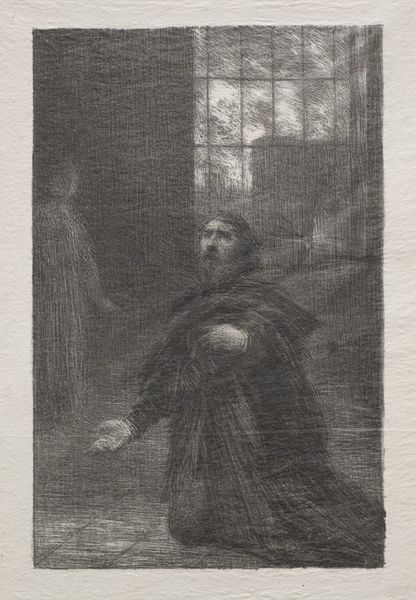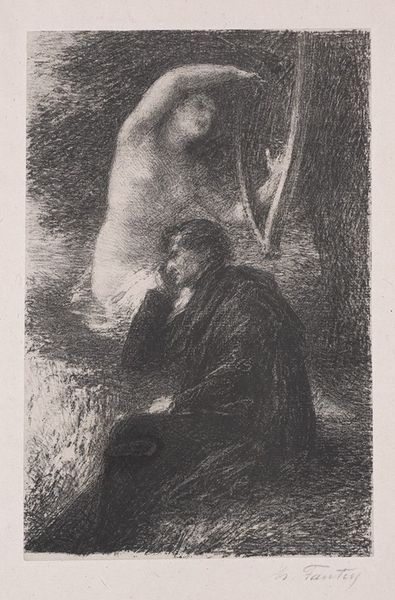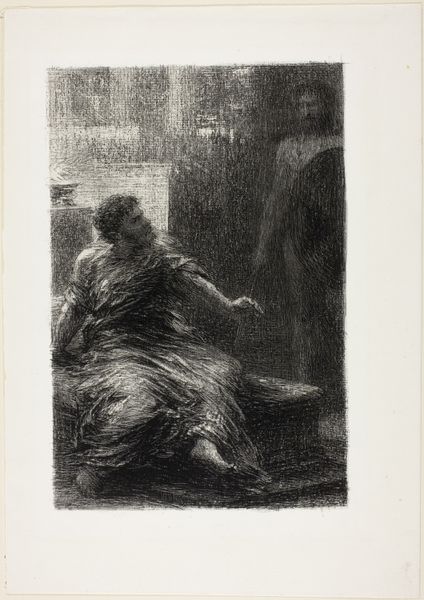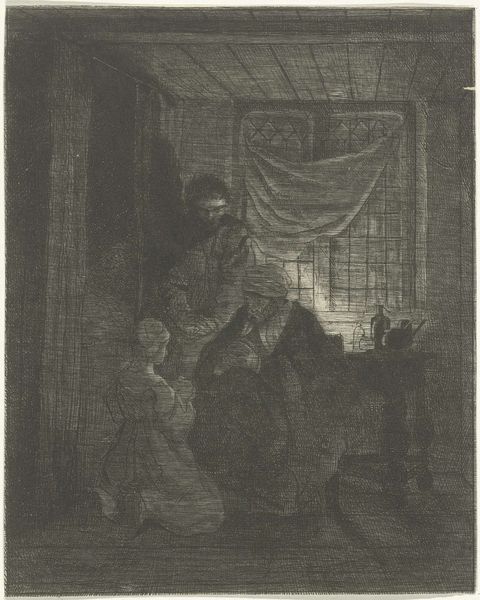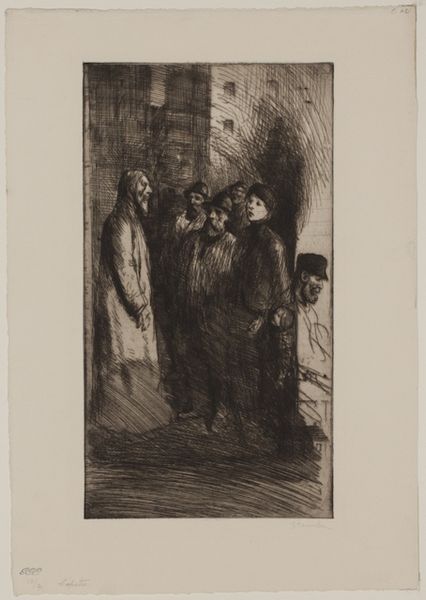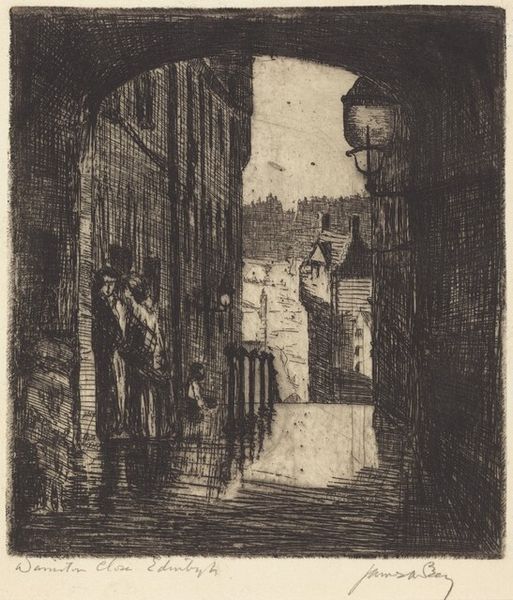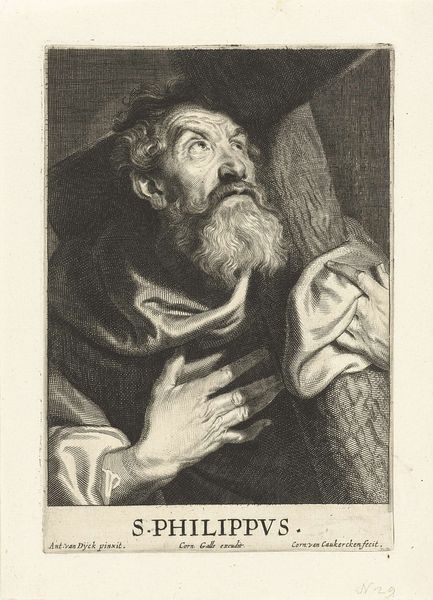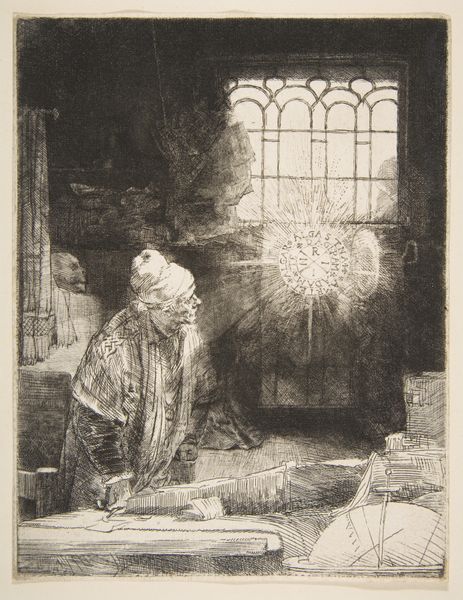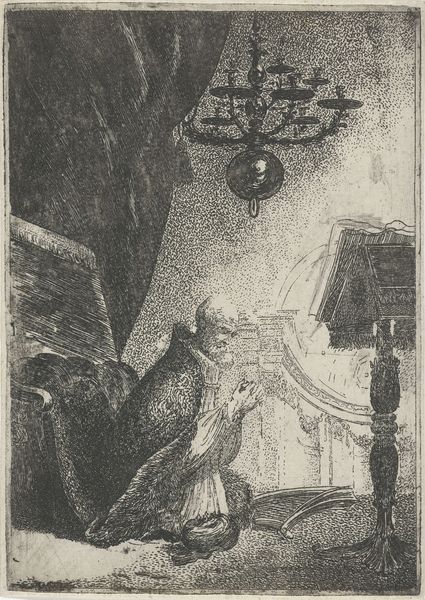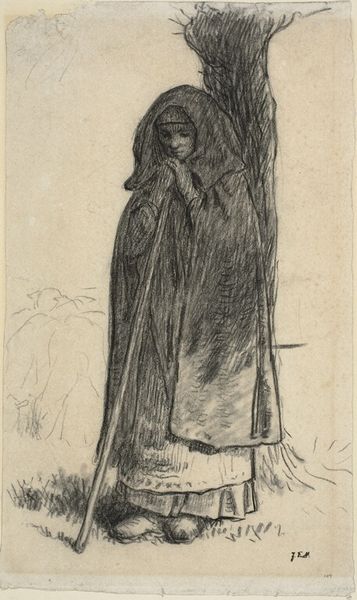
Dimensions: 226 × 147 mm (image); 446 × 339 mm (sheet)
Copyright: Public Domain
Editor: We're looking at "Rienzi, Act V: Rienzi's Prayer," a lithograph by Henri Fantin-Latour from around 1886. The scene feels intensely private, a moment of supplication, rendered with such stark contrasts. What draws your eye in this piece? How do you interpret this work within its historical moment? Curator: The piece immediately reads as a meditation on power, faith, and ultimate failure, a potent cocktail served during a period rife with anxieties about national identity and political upheaval in France. Fantin-Latour, rooted in Romanticism, chose to illustrate a scene from Wagner's opera "Rienzi," about a populist leader whose ambitions lead to his downfall. Notice how the composition stages Rienzi’s internal struggle: the darkness enveloping him contrasting with the distant, inaccessible light. Editor: The contrast between darkness and light really highlights the emotional weight. I'm wondering, how does Fantin-Latour use the historical narrative to comment on the politics of his own time? Curator: That's key. Remember, late 19th-century France grappled with the legacy of revolution and empire, seeking to redefine itself. Rienzi becomes a figure through which Fantin-Latour explores the seductive yet dangerous allure of charismatic leaders and the fragility of popular movements. His prayer, offered amidst ruin, speaks to a deeper crisis of faith – both religious and secular – at a time when traditional structures of authority were crumbling. Editor: So, you're saying it is more than just a scene from an opera; it's a reflection on leadership, failure, and faith in a changing world. I’m now considering how the ambiguity in the light affects the overall message about political hope and despair. Curator: Exactly. Fantin-Latour prompts us to question the narratives we build around leaders and the consequences of unchecked ambition, an artistic intervention relevant across centuries. It encourages critical engagement with the stories we tell ourselves about power. Editor: I see how this print encapsulates much more than just a scene; it’s a mirror reflecting anxieties about power and faith in late 19th-century France, really relevant even now. Thanks for shedding light on the work's multilayered message.
Comments
No comments
Be the first to comment and join the conversation on the ultimate creative platform.
